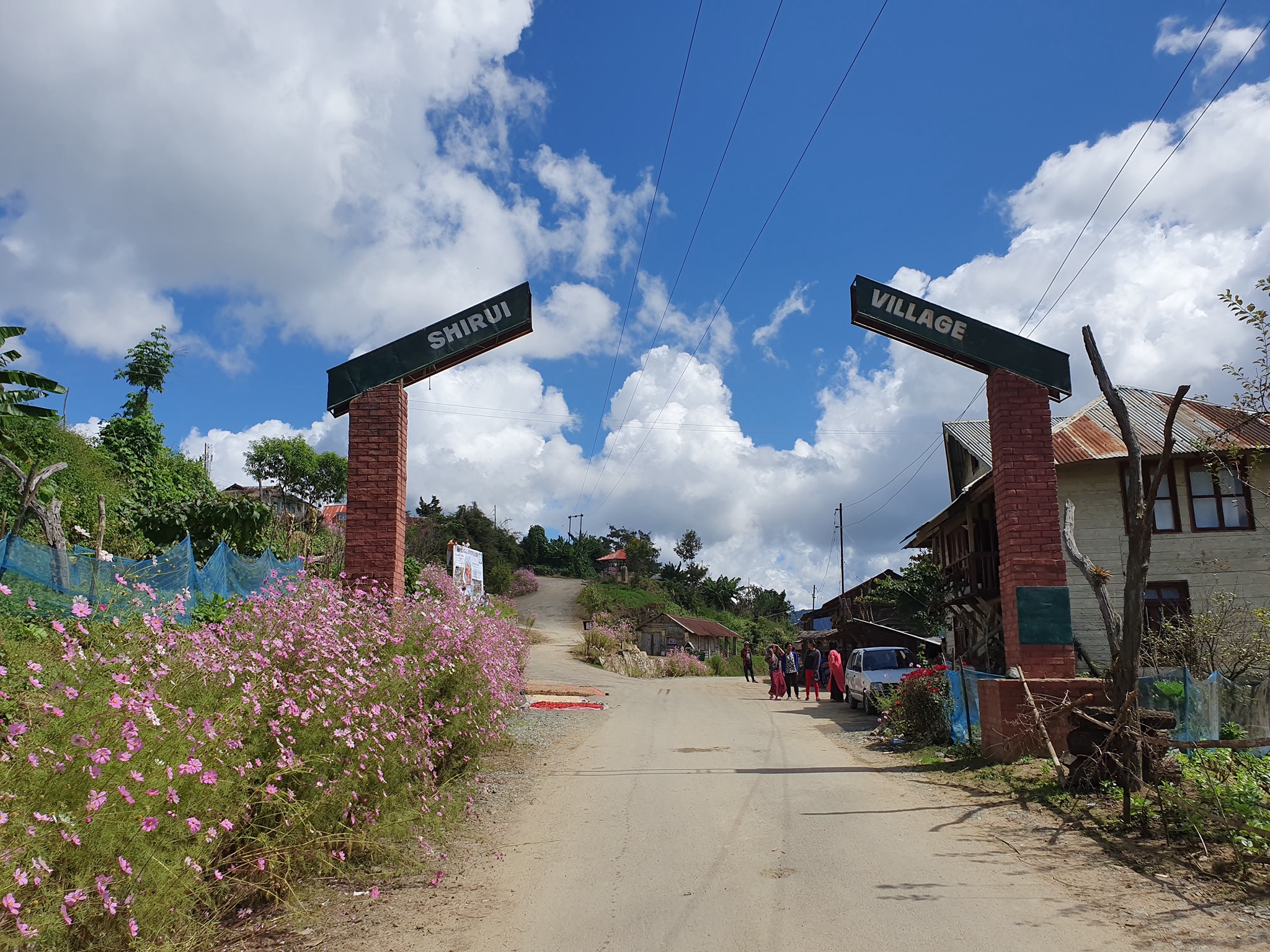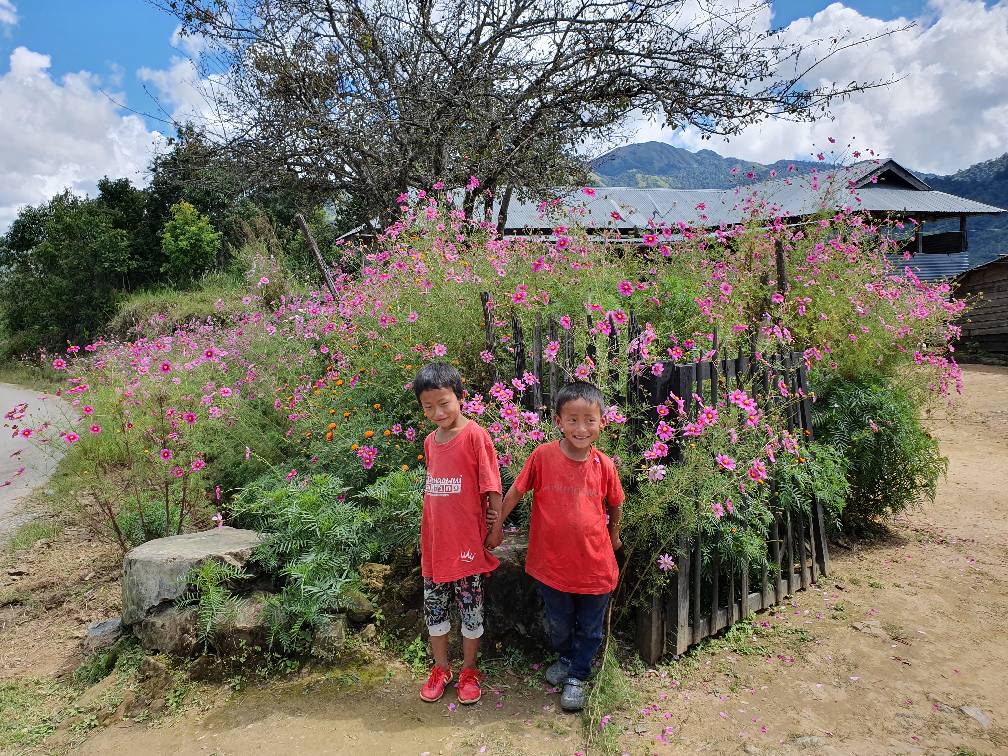Filled With Myth and Beauty, This Manipur Flower Is Wonder We Must Protect!
For tourists, taking a selfie with the flower has become more important than ensuring they do not destroy the plant. But the Shirui Lily is the identity of people of Ukhrul, and we must respect that.

Shirui Lily (Lilium mackliniae Sealy) locally known as Kashong Timrawon, is a rare bell-shaped flower with bluish-pink petals, showing seven colours under a microscope. Every year, between May 15 and June 5, tourists throng to its native habitat to see the beautiful flowers growing in Shirui Hills, located in Shirui Village in Ukhrul district of Manipur. It’s the peak season of this flower.
English Botanist Dr Frank Kingdon Ward from the New York Botanical Society first discovered the flower in 1946 and named it after his wife, Jean Macklin. This flower won the prestigious merit award in the Chelsea Flower Show organised by the Royal Horticulture Society, London. In 1989, it was declared the State Flower of Manipur.
What remains noteworthy is the belief that this bulbous plant can only be grown in Shirui Hills, because attempts to plant it elsewhere by the British never succeeded.
According to legends of the Tangkhul Naga community, a princess lies buried in Shirui Hills, waiting for her lover to return. The flower comes from the soil where the princess was buried. Several mythologies have been passed down over generations; tales told by the indigenous people of Ukhrul with much love and awe for the flower.
The pride of Manipur now faces possible extinction and has been categorised as an ‘endangered species’ with its genetic resources getting eroded over time.
The plant, which was reported to be 5 ft tall in 1948, has exhibited progressive dwarfing over the years, dropping to 1-3 ft in 2011 (Meitei, 2011) to decrease further to the average plant height of 0.262–0.328 ft. As per a field study by scientists in December 2015, its maximum height is now limited to 0.984 ft.
Even its area of distribution has been altered significantly over the years. Previously, it grew abundantly in the Shirui Hill range encompassing a 250-square km area from the first peak onwards, but since 2011, it has been growing only from the third peak onwards. Moreover, since 2015, the Shirui Lily can be found growing only in the seventh peak of the Shirui Hills.
What is behind this decline and destruction?

According to research carried out under the Institute of Bioresources and Sustainable Development Takyelpat, Imphal, (Tabitha Langhu, Nandeibam Samarjit Singh and Huidrom Sunitibala Devi. 2016), the decline of the Shirui Lily has been attributed to climate change, environmental degradation, irresponsible tourism, and incorrect conservation approaches like forest fires, coupled with the invasion of the habitat by a dwarf bamboo species ‘Machun’.
Dr Tabitha Langhu who now works for the Indian Council of Agricultural Research (ICAR), Imphal, points out that the Shirui Lily grows best in the peak of the Shirui Hills as it requires a cold climate and high velocity of the wind. However, due to climate change, the place is much warmer now.
Even the approach employed by the local community to conserve the flower through lighting forest fires, based on their belief that it will increase the humus of the soil, reduce the growth of invasive species in the habitat, to help Shirui Lily to flourish are incorrect and harmful practices. These forest fires burn down the seeds and the fragile seedlings, thereby decreasing the population and retarding the growth of the plant, besides raising the temperature of the habitat.
The scientists who have spent several years in research on Shirui Lily explain how tourists stamp on the plant, pluck the flowers or even uproot them which ultimately reduces the regeneration of the species besides littering the ecosystem with plastic bottles, disposable cups and plates and polluting the environment.
In spite of such inroads in research, no significant coordinated efforts are visible to link these findings to how things stand on ground. The villagers seem to be doing what they believe is good, while the researchers are working on their own.
Efforts to Save the Shirui Lily From Extinction

According to scientists, human interruption from forest fires and unguided tourism needs to be stopped and nature needs to be allowed to heal Shirui Lily from years of manipulation.
Scientists Manas Ranjan Sahoo, Mayengbam Premi Devi, Madhumita Dasgupta, Narendra Prakash and Shishom Vanao Ngachan from ICAR Research Complex for the North Eastern Region, Manipur Center, Imphal, have developed an efficient protocol for the micropropagation of Shirui Lily. Their research can address the challenges of the flower’s survivability in its natural habitat (An efficient protocol for in-vitro regeneration and conservation of Shirui lily (Lilium mackliniae Sealy): a lab-to-lab approach to save the rare endangered Asiatic lily species). Such conservation approaches could be helpful to save Shirui Lily from extinction in a sustainable way.
According to Thangjam Surchandra Singh, a scientist at the Indian Council of Agricultural Research (ICAR) Imphal, prioritising research can go a long way in conserving the flower because that alone can provide evidence on the magnitude of the crisis, the area and the tools of intervention, failing which, the species has a high likelihood of extinction. Currently, research is limited to academic pursuits in Manipur, without application either by the government or any development agency.
Scientists have recommended a list of actions that can be taken by the government, both Central and State, like establishing a weather forecast station in Ukhrul that can monitor the rise of temperature and assist the research on survival and multiplication, and a centre for Tissue Culture which can overcome the barriers experienced by research personnel in obtaining plant specimen from the habitat and loss of specimen due to logistics.
Collaboration between central government research institutions, Manipur University, the line departments within Manipur State Government like Forest, Environment, Agriculture, Horticulture, Rural Development, Tourism, and District Administration, civil society, media and the community in Ukhrul can go a long way in raising awareness on the protection of Shirui Lily and the implementation of conservation initiatives.
The Shirui Lily Festival has been organised by the Department of Tourism and Manipur State Government since 2017, drawing tourists to raise awareness. Live music and cultural shows, traditional dances, folk songs, beauty pageant, exhibits, indigenous games and sports competitions like the Shirui Lily Mountain Bike Downhill Race Championship mark the four-day festival.
Voices of the Community

The community, especially the youth and elders, are doing what they can to conserve the Shirui Lily, but they lack the scientific know-how. Ngachan Luirei, Convenor of Local Organising Committee from Shirui Village, informed that the government was investing in infrastructure in the village that would enhance the festival celebration and tourism considerably. Moreover, the village rose to recognition and importance due to the Shirui Lily Festival.
Khavangpam Wungsek, the headman of Shirui Village, shared what the flower means to the indigenous people of Ukhrul. He says, “Shirui Lily is the identity of people of Ukhrul, and the world is getting connected to us only because of it. Even the support that we are receiving from the government and foreigners is directed to Ukhrul because of Shirui Lily.”
He points out that taking a selfie with the flower has become more important for tourists than ensuring they do not destroy the plant or the flower.
The village elders foresee that climate change is about to wipe out a beautiful lily which is intertwined with the identity, aspirations, history and culture of the indigenous people of Ukhrul, the Tangkhul Nagas.
Ngachan Luirei says, “The Government of Manipur is interested in building homestays, guest house, beautiful venues and facilities for use either during the annual Shirui Lily Festival or for tourists coming to Ukhrul at other times of the year, when equal importance should be given to protect the Shirui Lily from extinction. What will the tourists come to see if the Shirui Lily becomes extinct?”
(Written by Urmila Chanam and Edited by Shruti Singhal)
Featured image courtesy: Priyojik Akoijam
Like this story? Or have something to share?
Write to us: [email protected]
Connect with us on Facebook and Twitter.
If you found our stories insightful, informative, or even just enjoyable, we invite you to consider making a voluntary payment to support the work we do at The Better India. Your contribution helps us continue producing quality content that educates, inspires, and drives positive change.
Choose one of the payment options below for your contribution-
By paying for the stories you value, you directly contribute to sustaining our efforts focused on making a difference in the world. Together, let’s ensure that impactful stories continue to be told and shared, enriching lives and communities alike.
Thank you for your support. Here are some frequently asked questions you might find helpful to know why you are contributing?


This story made me
-
97
-
121
-
89
-
167













